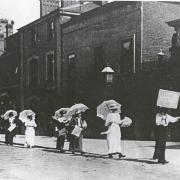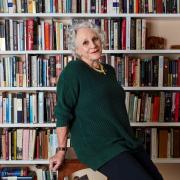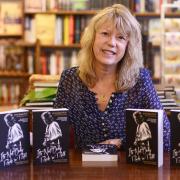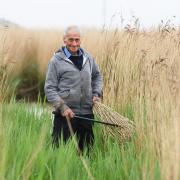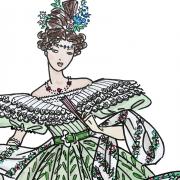Hundreds of thousands of ceramic poppies are surrounding the Tower of London. The sea of sturdy, bright flowers will bloom until Armistice Day as a memorial to the slaughter and sacrifice of the First World War. Each of the 888,246 poppies represents a soldier, sailor or airman from Britain and the Commonwealth, killed in the First World War. Together they turn the dry moat bright red.

Norfolk man General The Lord Richard Dannatt helped create this poignant tribute.
He was head of the British Army until 2009 and today serves as Constable of the Tower of London.
“It will be an iconic image,” says Lord Dannatt, who lives at Keswick, near Norwich. “The idea of it growing, so that the moat will gradually fill with red is significant, but part of the point of it is that although it looks like a huge red mass of colour, it is made up of 888,246 individual poppies and each of those poppies represents a life lost. It takes you from the general catastrophe to the individual anguish of 888,246 deaths and 888,246 grieving families.”
It is taking more than three weeks to plant the hundreds of thousands of poppies in the moat, each mounted on a slender stalk. The final three are to be placed by Prince William and Prince Harry on Tuesday, August 5, 100 years to the day after the start of the war. It will follow a candlelit vigil at Westminster Abbey when Lord Dannatt will read one of the lessons and the final candle at the Grave of the Unknown Warrior will be extinguished at 11pm, exactly a century after war was declared.
“I think it’s really important to mark the centenary because it was such a catastrophic event,” say Lord Dannatt. “It changed so many people’s lives. If the diplomats and politicians had played their part differently it might not have had to happen and it is important to remember it, to make sure it never happens again.”
Artist and pottery maker Paul Cummins and theatre designer Tom Piper worked with Lord Dannatt to stage the striking memorial in the moat.
By the end of August 1914 more than 1,600 men had been enlisted at a recruitment station in the City of London, and sworn in, at ceremonies held in the dry moat. Training was also held here before the soldiers left for Europe. Many never returned and their memories will be among those honoured this year with a hand-made flower in their name. The installation is called Blood Swept Lands And Seas Of Red.
Every evening, from August 5 to November 11, the Last Post will be sounded at dusk, followed by the reading of some of the names of those who died. Family members will be able to request a name be read on a particular day if they wish to attend.
The poppies will remain in place until 11am on November 11 – Armistice Day – and will be sold, for £25 each, to raise £15m for six armed forces charities including the Royal British Legion and Help For Heroes, the charity Lord Dannatt helped set up. Lord Dannatt is no stranger to bravery and service. He won the Military Cross for gallantry in his early 20s and at 26 had to battle back from a devastating stroke which left him paralysed and unable to speak. He studied theology at university and his strong Christian faith helped shape his Army career, and the charitable work that has continued into his retirement. He is still a patron of Help for Heroes and is president of the Norfolk Churches Trust, which helps protect the county’s astonishing heritage of religious buildings.
Through most of his Army career, which included postings across Britain and Germany, a riverside house in Keswick was home for the Dannatt family. Lord Dannatt, and his wife, Philippa, moved in as newlyweds and the house became home for their own four children, plus the niece and nephew they took in after Richard’s sister died. This year Lady Dannatt is High Sheriff of Norfolk.
Here in Norfolk, Lord Dannatt will be involved in events marking the 100th anniversary of the death of Norfolk heroine Edith Cavell – the vicar’s daughter and nurse from Swardeston (close to his Keswick home) who was executed by the Germans for helping Allied soldiers escape.












